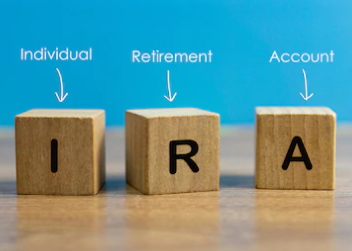There are many of you who still contribute to your IRA annually. And there are those of you who continue to contribute to your IRAs whose income falls in and around the Modified Adjusted Gross Income Limit.
This is the IRS limit where the taxpayer that is covered by an employer sponsored retirement plan begins to lose the deductibility of their Traditional IRA contribution.
The Modified Adjusted Gross Income Limit of a single tax filer is $56,000. The income limit of joint tax filers is $98,000 for the tax year of 2016.
This complicates saving for retirement and many times dissuades savers from contributing to an IRA. In addition, the income levels change every so often due to the cost of living adjustments.
Thus, making things ridiculously complex.
There are those of you who fall in this category who fail to mention to your CPA that you have made an IRA contribution despite not being able to deduct the contribution. Then there are those who file their returns themselves may often ignore the over contribution and go their merry way.
Some of you may ask, if there is no immediate tax benefit for a contribution, why contribute to the IRA? Because at least the growth on that amount can sheltered inside the IRA until it is withdrawn. Therefore, if you are a saver, this is the first place to set aside some money. A vehicle that earns tax deferred.
You also need to know that the growth (earnings) on nondeductible contributions are taxable when withdrawn. Yet, the contribution itself (the principal) is withdrawn tax free. The distribution is made on a pro rata basis with any pretax funds in the IRA. That is the reason why you need to tell your tax preparer about the nondeductible contributions. How else can the IRS know that there is after-tax money inside the IRA?
Also, the over contributions can be removed from the IRA without penalty, but many times are not. Leaving the you the saver at risk of being taxed a second time on the same dollars’ years later plus a penalty if withdrawn prior to 59 1/2. That gets very expensive.
IRA accounts spread across firms:
You cannot expect the IRA trustee or custodian to report the taxable and tax-free portions of IRA withdrawals. The IRA custodian does not necessarily (if ever) know that the client did not take a tax deduction for his or her IRA contribution. Even if they do know, the prorate rule applies to all IRAs owned by the taxpayer, so when IRAs are spread across multiple firms or custodians, there is no way a custodian could calculate the tax-free portion of the withdrawal.
The onus is on you.
This is where IRS Form 8606 comes in. It is a form that serves multiple purposes. First, it is used to inform the IRS you have made a nondeductible contribution to your traditional IRA. It is also used to track those contributions over time by keeping a running total. Every year you make a nondeductible IRA contribution, you need to complete this form.
Second, the form is used for the pro rata calculation which is needed to figure out the tax-exempt portion to the IRA withdrawal. The form also assists in tracking the amount of contributions remaining in the IRA after each withdrawal. And is used to recalculate the tax-free percentage each year.
If you have been making nondeductible contributions for years and have never filed, it is not too late.
IRS allows you to file form 8606 for prior years to catch up on your reporting. But, you must use the form for the year the contribution was made. This means digging for old IRS forms online. Also, there is a $50 penalty for late filings. But that penalty will probably be money well spent.
So, while you may think you are doing your tax preparer a favor by not mentioning the nondeductible IRA contributions, you are only hurting yourself.
I recently ran across an article discussing this dilemma. I hope some of you have found this information useful.
Corey N. Callaway
Investment Advisor Representative
